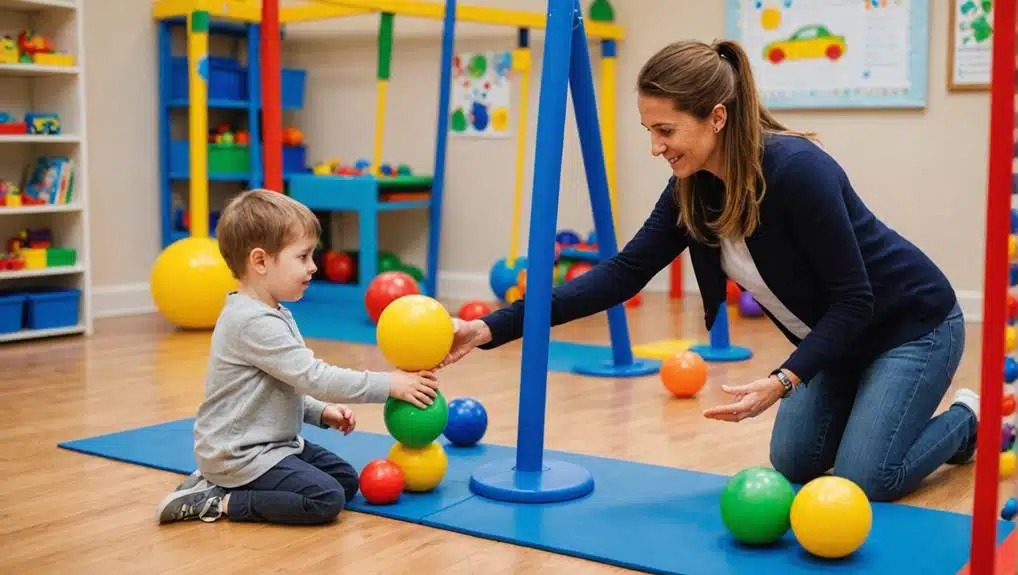As a pediatric physiotherapist dedicated to transforming the lives of children with neurological challenges, I have seen how sensory processing issues often underlie many developmental difficulties. Sensory integration therapy is a powerful tool that can help children with conditions like cerebral palsy, autism, and other neurological disorders to better navigate their world, improve their behavior, and gain confidence in their abilities. I want to share with you what sensory processing truly is, how therapy can make a difference, and how you, as parents, can be active partners in this journey.
Understanding Sensory Processing
Imagine a child who seems overwhelmed by the slightest touch, or one who flaps their hands repeatedly or avoids certain textures altogether. These behaviors often stem from the way their brain processes sensory information—touch, sound, sight, movement, and even body awareness. Sensory processing refers to how the nervous system receives, organizes, and responds to sensory stimuli. When this system functions smoothly, children can focus, learn, and move with relative ease. When it doesn’t, it can lead to difficulties in behavior, coordination, and daily functioning.
Children with neurological disorders such as cerebral palsy or autism frequently experience sensory processing challenges. They might be overly sensitive to sounds or textures or may seek intense sensory input to feel grounded. These issues can interfere with their learning, social interactions, and even basic self-care skills.
How Sensory Integration Affects Behavior and Development
Sensory processing impacts every aspect of a child's life. For example, difficulty calming down after a busy day might be due to sensory overload. Trouble concentrating in school, frustrations during play, or tantrums can often be traced back to sensory issues. When children cannot modulate their sensory responses, they struggle to sit still, focus, or establish emotional control—all fundamental skills for learning and social interaction.
In my clinical experience, I’ve seen children with autism who, through targeted sensory therapy, learn to manage their responses better. They can enjoy activities that once seemed impossible because their nervous system becomes better adapted to process stimuli efficiently.
Therapy Strategies: How Sensory Integration Can Help
Sensory integration therapy is about teaching the nervous system to handle stimuli more effectively. It involves carefully planned activities that provide the child with the right amount of sensory input, helping them develop better responses over time. Common techniques include swinging, brushing, or playing with textured objects, all tailored to the child's specific needs.
For example, a child who avoids tactile input might benefit from gentle brushing with a sensory brush or playing with soft, calming textures. Conversely, a child seeking excessive input might be engaged in purposeful movement exercises that help them feel more grounded. These activities are designed to gently challenge the child's sensory system while ensuring comfort and safety, encouraging adaptive responses.
My Approach: Personalized, Child-Centered Care
In my practice, I believe that every child is unique. I start with a thorough sensory assessment to understand each child's specific sensory profile. Based on this, I craft personalized therapy plans that integrate play, movement, and sensory activities aligned with their developmental needs. I work closely with parents, educating them about their child's sensory profile and guiding them on how to incorporate therapeutic activities at home.
Supporting Parents at Home
Parents play a vital role in sensory integration therapy. Simple strategies like creating a calming corner with soft cushions, using weighted blankets, or maintaining consistent routines can significantly support therapy outcomes. I always encourage parents to observe their child's responses and to incorporate sensory-friendly activities regularly, turning everyday moments into opportunities for growth.
A Brighter Future Awaits
Sensory integration therapy has the power to drastically improve a child's daily functioning—reducing tantrums, enhancing focus, and fostering better social interactions. I’ve seen children who once struggled with self-regulation blossom into confident, engaged learners. It’s a journey that requires patience, consistency, and collaboration, but the rewards are truly life-changing.
In conclusion, if your child faces challenges with sensory processing, know that effective therapies exist and that you are an essential part of the process. Together, we can help your child better understand and manage their sensory world, opening doors to a more joyful, engaging, and independent life.



Add a Comment